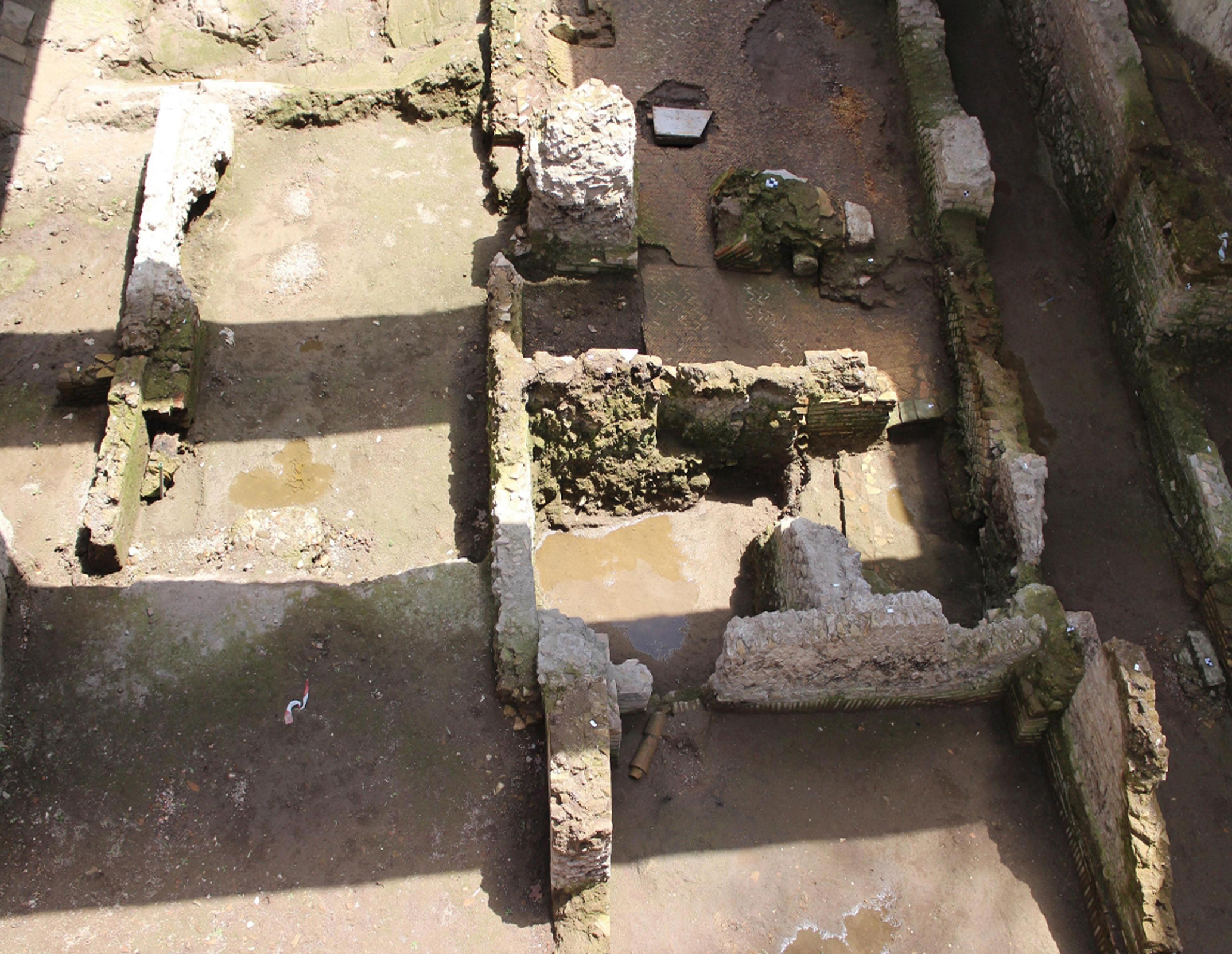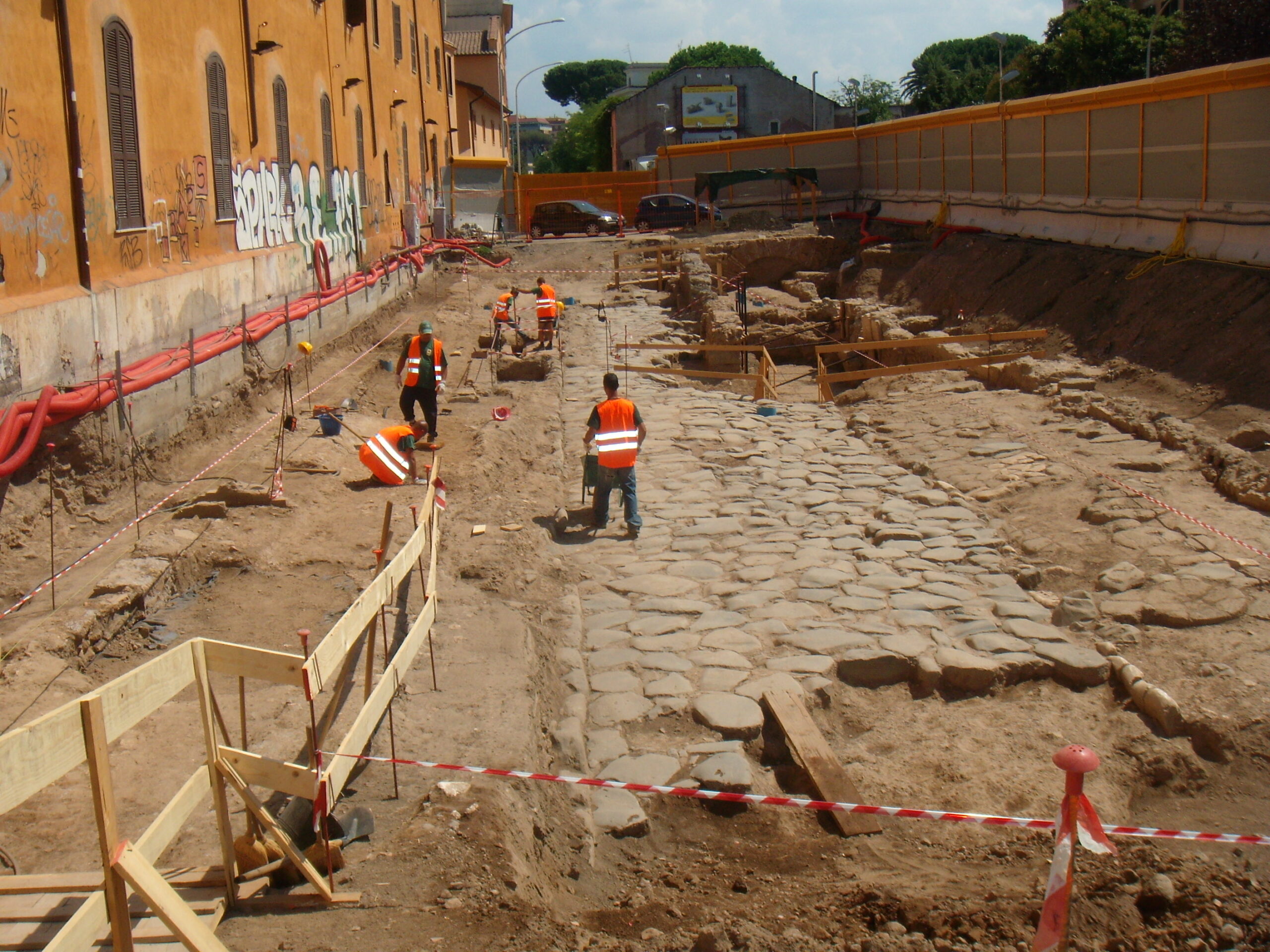The Compensation Well at Largo dell’Amba Aradam was constructed to carry out the Compensation Grouting operation, which was intended to mitigate the settlements caused by the mechanical excavation of the underground tunnels along the Aurelian Walls at Porta Metronia.
The excavation of this well revealed an intriguing archaeological stratigraphy spanning contemporary, modern, high medieval, and late antique periods, down to the foundation level of a Trajanic-era building (late 1st to early 2nd century AD), where three rooms were uncovered.
Surface Arrangements
All surface areas affected by the construction of Line C, especially those located in the historical center, undergo restoration and redevelopment measures before being returned to their original state.
Specifically, the design of green spaces was developed based on guidance provided by the technicians from the Rome Gardens Office.
The construction site for the Compensation Well extended across the entire Umberto Improta Garden at Largo dell’Amba Aradam, and the structures of the project were situated centrally within the garden. Once the consolidation work was completed, the well was closed to ground level, and the entire area is the subject of a restoration and redevelopment project currently in the final stages of completion.

Before the construction site was established, the garden, in terms of vegetation, featured ornamental species such as mimosa, siliquastrum, yew, hollies, and forsythias. Along the perimeter, a series of hedges (Japanese privet and pittosporum) were planted to separate the garden from the adjacent roads and pedestrian pathways.
The central part of the area was occupied by a fountain, which, following the construction work, was repositioned after undergoing a restoration process.
The restoration and redevelopment project preserved the original design of the area, and the location where the Compensation Well was built allowed for the preservation of a significant portion of the existing tree species. These trees were reintegrated into the final layout, and localized maintenance interventions were carried out, including the installation of irrigation systems and the restoration of the hedges, among others.
To compensate for the removed trees, new tree and shrub specimens were planted. Additionally, measures were taken along the pedestrian pathways leading to the park to remove architectural barriers, making them more accessible.



